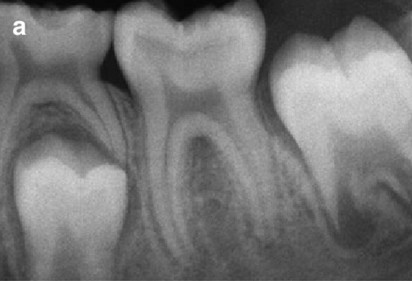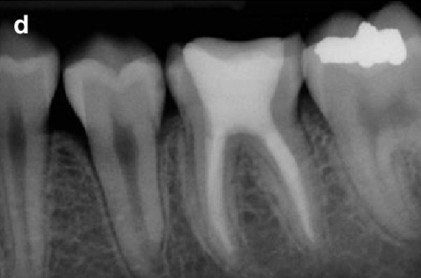Jump To:
Fast Facts
- Approximate Length of Stay: 2 Days
- Operation Duration: 1-2 Hours
- Prerequisite: X-ray

Endodontics
“Endodontics” is a specialized branch of dentistry that focuses on the diagnosis, treatment, and prevention of diseases and injuries related to the dental pulp (the soft tissue inside the tooth) and the periapical tissues (the area surrounding the root of the tooth).
Endodontists are dentists with advanced training in these areas, particularly in performing root canal therapy and other procedures to save teeth that might otherwise need to be extracted.
Key Aspects of Endodontics
-
Dental Pulp and Root Canal System
- Dental Pulp: The pulp is the innermost part of the tooth, consisting of nerves, blood vessels, and connective tissue. It plays a vital role during tooth development but can become infected or damaged in mature teeth.
- Root Canal System: The root canal is the space within the tooth that houses the pulp. It extends from the crown of the tooth down to the roots and into the surrounding bone.
-
Common Conditions Treated in Endodontics
- Pulpitis: Inflammation of the dental pulp, which can cause severe tooth pain and sensitivity. If untreated, it can lead to pulp necrosis (death of the pulp).
- Periapical Abscess: An infection at the tip of the tooth root, often resulting from untreated pulpitis or a deep cavity.
- Cracked or Fractured Teeth: Damage to the tooth that can expose the pulp, leading to pain and infection.
- Traumatic Dental Injuries: Damage to the pulp or root due to injury, such as a blow to the mouth.
-
Root Canal Therapy
- Purpose: To treat infection or inflammation within the tooth’s pulp, saving the tooth from extraction.
- Procedure:
- Diagnosis: The endodontist examines the tooth and may use X-rays to assess the extent of the infection or damage.
- Anesthesia: Local anesthesia is administered to numb the affected area.
- Access Opening: A small opening is made in the crown of the tooth to access the pulp chamber and root canals.
- Cleaning and Shaping: The infected or damaged pulp is removed, and the inside of the canals is cleaned and shaped using specialized instruments.
- Filling and Sealing: The cleaned canals are filled with a biocompatible material (usually gutta-percha) and sealed to prevent future infection.
- Restoration: After root canal therapy, the tooth is often restored with a crown or filling to protect and strengthen it.
-
Advanced Endodontic Procedures
- Endodontic Retreatment:
- Purpose: To correct issues with a previous root canal treatment that has failed or become re-infected.
- Procedure: The previous filling material is removed, the canals are cleaned and reshaped, and new filling material is placed.
- Apicoectomy (Root-End Surgery):
- Purpose: To remove infection or inflammation at the root tip and surrounding tissue, particularly when root canal therapy alone is insufficient.
- Procedure: The gum tissue is opened, the root tip and infected tissue are removed, and a filling is placed to seal the root.
- Pulpotomy and Pulpectomy:
- Pulpotomy: Involves removing the infected portion of the pulp in a tooth, typically used in primary (baby) teeth.
- Pulpectomy: Involves removing all of the pulp tissue from the pulp chamber and root canals, often a step in root canal therapy for permanent teeth.
- Regenerative Endodontics:
- Purpose: To promote the regrowth of dental pulp in immature teeth with necrotic pulp, preserving the natural tooth structure.
- Procedure: Involves disinfection of the root canal system and the use of biological materials to stimulate tissue regeneration.
- Endodontic Retreatment:
-
Pain Management and Post-Treatment Care
- Managing Pain: Endodontic procedures are designed to relieve pain caused by pulp inflammation or infection. After the procedure, some discomfort may occur, but it is typically manageable with over-the-counter pain relievers.
- Follow-Up Care: Proper follow-up care is essential to ensure healing and prevent reinfection. Regular dental check-ups and good oral hygiene are critical.
-
Technology in Endodontics
- Digital Imaging: Advanced digital X-rays provide detailed images of the tooth and surrounding structures, aiding in accurate diagnosis and treatment planning.
- Operating Microscopes: Used to enhance visibility within the small and complex root canal system, ensuring precise treatment.
- Cone Beam Computed Tomography (CBCT): 3D imaging technology that provides detailed views of the tooth’s anatomy, helping with complex cases and treatment planning.
- Ultrasonics: Used in cleaning and shaping the root canals, especially in retreatments and apicoectomies.
-
Indications for Endodontic Treatment
- Severe Tooth Pain: Especially when the pain is persistent, spontaneous, or worsens with temperature changes.
- Prolonged Sensitivity: Sensitivity to hot or cold that lingers even after the source is removed.
- Swelling or Tenderness: Swelling in the gums, face, or neck, or tenderness when chewing or touching the tooth.
- Discoloration of the Tooth: Darkening of a tooth, which may indicate nerve damage or pulp death.
- Radiographic Evidence: X-rays showing bone loss or an abscess near the root tip.
-
Prevention of Endodontic Issues
- Good Oral Hygiene: Regular brushing, flossing, and dental check-ups to prevent cavities and gum disease.
- Immediate Care for Dental Trauma: Prompt treatment of any dental injuries can prevent pulp damage and the need for endodontic treatment.
- Early Intervention: Addressing dental problems early can prevent the need for more extensive endodontic procedures.
Importance of Endodontics
- Saving Natural Teeth: Endodontic treatments are primarily focused on saving natural teeth that might otherwise need to be extracted due to pulp or root issues.
- Preserving Oral Health: By treating infections and inflammation within the tooth, endodontics helps preserve the overall health of the mouth and prevent further complications.
- Maintaining Function and Aesthetics: Retaining natural teeth helps maintain proper chewing function, speech, and the aesthetics of the smile.
Endodontics plays a crucial role in preserving natural teeth and maintaining oral health through the diagnosis and treatment of pulp and root-related issues. In SHIFA by using advanced techniques and technologies, endodontists can save teeth that might otherwise be lost, providing patients with long-term relief from pain and infection.
Compare Before and After Images


Endodontics
Frequently Asked
Questions
Why choose SHIFA for Dental Services?
Iran is a popular destination for dental tourism because of its affordable dental services, high-quality care, and well-equipped clinics.
Dental procedures in Iran can be 30–80% cheaper than in other countries.
In Shifa clinic we provide dental services in the shortest possible time using expert dentists at the best cost.
Is it painful to have a Root Canal?
During a Root Canal procedure, local anesthesia is administered to numb the tooth and the surrounding area, so patients typically do not experience pain during the treatment. However, it’s common to feel some discomfort or mild soreness in the days following the procedure as the tooth heals. This discomfort can usually be managed with over-the-counter pain relievers and should gradually subside.
How long does a Root Canal treatment take?
The duration of a Root Canal treatment typically ranges from 1 to 2 hours, but it can vary depending on factors like the tooth’s location, the complexity of the infection, and the individual patient’s anatomy. In some cases, a single appointment is sufficient to complete the procedure, while others may require multiple visits.
Can you eat after a Root Canal?
Yes, you can eat after a Root Canal procedure. However, it’s advisable to wait until the numbness from the local anesthesia has worn off to prevent accidentally biting your cheek or tongue. In the initial days following the procedure, it’s a good idea to stick to soft and easy-to-chew foods to minimize any discomfort.
SHIFA's Departments
Related Services
Featured Services

Hand Surgeries
“Hand Surgeries” encompass a wide range of procedures performed to treat conditions affecting the hand, wrist, and forearm. These surgeries

Lacrimal Duct Surgery
“Lacrimal Duct Surgery”, also known as “Dacryocystorhinostomy” (DCR), is a procedure performed to treat blocked tear ducts (nasolacrimal duct obstruction).<br

Facial Thread Lift
A “Facial Thread Lift” is a minimally invasive cosmetic procedure that lifts and tightens sagging skin on the face using

Breast Implant Surgery
“Breast Prosthesis Surgery” commonly known as “Breast Augmentation” or “Breast Implant Surgery”, is a cosmetic procedure designed to enhance the
Our Blog Articles
- mehdi.mhj@gmail.com
Doccure – Making your clinic painless visit?
Explore the benefits & challenges of virtual healthcare appointments, along with tips for making good...
Read More- mehdi.mhj@gmail.com
Benefits of Consulting With an Online Doctor
Uncover strategies to achieve a harmonious balance between professional and personal well-being....
Read More- mehdi.mhj@gmail.com
What are the benefits of online doctor booking
Explore importance of quality sleep & learn tips to improve your sleep, ensuring raise-up refreshed...
Read More- mehdi.mhj@gmail.com
5 Great reasons to use an online doctor to choose
Delve into the impact of digital life on mental health & discover practical strategies to...
Read More





Comments are closed.